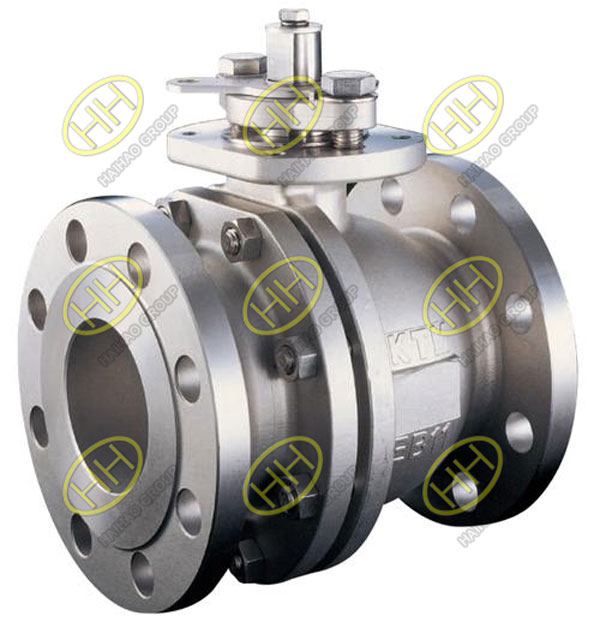Advantages and disadvantages of ball valves
Ball valves, developed from plug valves, utilize a spherical closure element to control the flow of media. By rotating the ball 90° around the stem’s axis, the valve can fully open or close. In pipeline systems, ball valves are primarily used to shut off, distribute, or change the direction of media flow. Specially designed ball valves with V-shaped openings also provide excellent flow regulation.

A351 CF8M ball valve
Advantages:
Minimal Flow Resistance
Ball valves exhibit the lowest flow resistance, which is effectively zero when fully open.
Reliability in Harsh Media
Ball valves perform reliably in corrosive media and low-boiling liquids, even without lubrication, due to their non-jamming design.
High Pressure and Temperature Sealing
Ball valves can achieve complete sealing across a wide range of pressures and temperatures.
Rapid Opening and Closing
Some ball valve designs can open or close in as little as 0.05–0.1 seconds, making them suitable for automated systems such as test benches. Quick operation minimizes impact during valve actuation.
Self-Positioning Closure
The spherical closure element automatically positions itself at the boundary position, ensuring secure operation.
Reliable Double-Sided Sealing
Ball valves provide reliable sealing on both sides of the valve, ensuring no leakage.
Protection of Sealing Surfaces
When fully open or closed, the sealing surfaces of the ball and valve seat are isolated from the media, preventing erosion from high-speed flow.
Compact and Lightweight Design
The compact and lightweight structure makes ball valves particularly suitable for low-temperature media systems.
Symmetrical Structure
The symmetric valve body design, especially in welded configurations, allows ball valves to withstand pipeline stresses effectively.
High Pressure Differential Tolerance
Ball valves can handle significant pressure differences during closure.
Underground Installation
Fully welded ball valves can be buried directly underground, protecting internal components from corrosion and achieving a service life of up to 30 years. This makes them an ideal choice for oil and gas pipelines.
Disadvantages:
Limitations of PTFE Sealing Material
The most common seat sealing material in ball valves is polytetrafluoroethylene (PTFE). While PTFE is chemically inert, has a low friction coefficient, excellent sealing properties, and a wide operating temperature range, it has physical limitations:
High expansion coefficient.
Sensitivity to cold flow.
Poor thermal conductivity.
These characteristics necessitate specific design considerations for seat seals. When the sealing material hardens, reliability decreases. Additionally, PTFE’s temperature tolerance is limited to below 180°C. Beyond this, aging occurs, and for long-term use, the recommended temperature is below 120°C.
Inferior Flow Regulation
Compared to globe valves, ball valves have relatively poorer flow regulation capabilities, particularly in pneumatic or electric configurations.
Recently, our company has produced ball valves for a domestic customer. As an expert in the field of pipeline systems, Haihao Group is involved in all kinds of products in pipeline systems. If you have relevant needs, please feel free to contact us. Email:sales@haihaogroup.com
